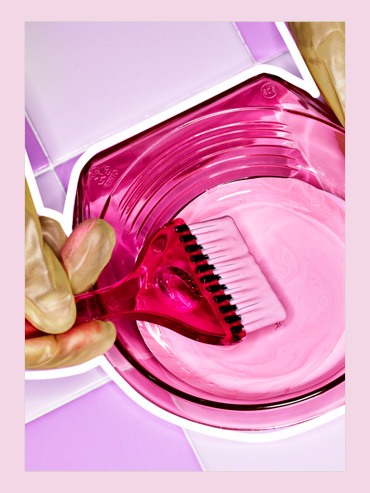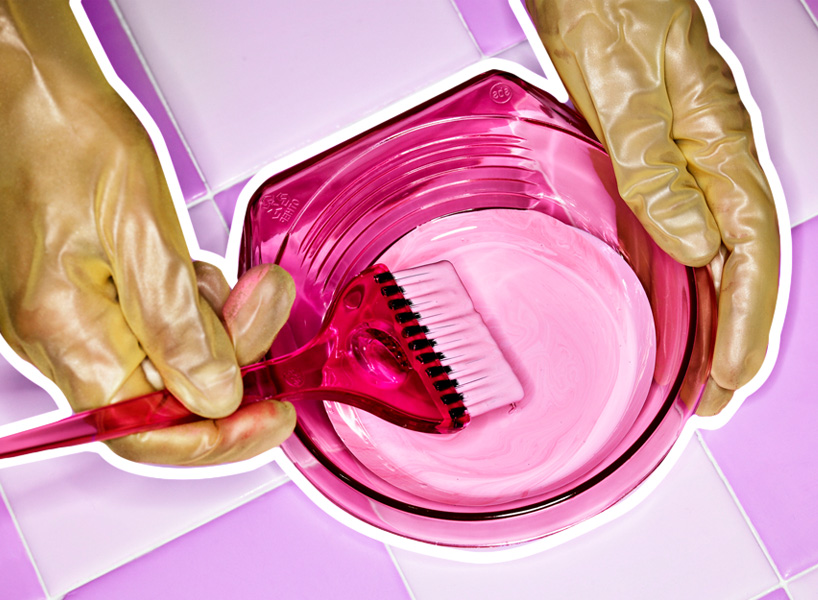Should You Actually Be Freaking out About Hair Dye and Its Link to Cancer?
A recent study suggests a link between the use of some common hair products and breast cancer. But should we actually be concerned?


Nowadays, it seems EVERYTHING has the potential to cause cancer, from our cell phones to highly processed foods.The latest product to join the growing list? Hair dye. Earlier this month, the International Journal of Cancer (IJC) published an internet-breaking study on a possible link between breast cancer and the use of permanent hair dye and chemical hair straighteners, and the results were a little alarming. (OK, they were pretty frightening.) The findings even made their way into the world of pop culture, with artist Alexandra Grant (who also happens to be the seriously fab GF of actor Keanu Reeves) sharing the study along with her own experience of obsessively dyeing her hair before she let it go naturally grey in her 30s.
Here, everything you should know about the recent study, and whether you should actually be concerned.
What should I know about the study?
The study, conducted by researchers at the National Institutes of Health in the U.S., set out to examine a possible link between permanent hair dye and chemical straightener (also known as relaxers or perms) use and breast cancer risk by ethnicity. A total of 46,709 breast-cancer-free women between the ages of 35 and 74 participated, and they were followed for an eight-year period. Prior to the study, participants were asked if they had used hair dye and/or straighteners in the past 12 months and, if so, how frequently.
What were the key findings?
Researchers found that women who used permanent hair dye were 9% more likely to develop breast cancer than those who didn’t. They also found that the risk was significantly higher for Black women, who had an increased risk of 45% compared to 7% in white women; Black women who used permanent hair dye more frequently (every five to eight weeks) were at a 60% higher risk.
When looking at chemical straighteners, 74% of Black women reported using them compared to only 3% of white women. Overall, there was an 18% higher breast cancer risk in those who used these products versus those who didn’t, with an increased risk of 30% for more frequent use (every five to eight weeks).
Why is hair dye a concern?
In case you didn’t know, there are over 5,000 chemicals found in hair products; hair dye is commonly known to contain ammonia, benzene and peroxide. “The concern is that some of these chemicals could be absorbed by the body and travel to breast tissue or, alternatively, affect the endocrine [hormonal] system,” explains Dr. Elysia Donovan, a radiation oncologist at the Odette Cancer Centre at Sunnybrook Health Sciences Centre in Toronto. In fact, a past study on rats showed that certain chemicals in hair dye were found to promote tumours in the mammary glands.
Are there known carcinogens in hair dye and straighteners?
According to Joanne Kotsopoulos, Scientist, Women’s College Research Institute, some of the chemicals in hair dye may be carcinogens (substances that are known to induce cancer) —but it hasn’t been proven. “Up until now, the data that hair dye is a risk factor hasn’t been that strong,” she says. “Prior studies haven’t really found any consistent associations, so it’s never been said that hair dye is a carcinogen.” Straighteners, on the other hand, have been found to contain formaldehyde, a known carcinogen. (FYI, it’s one of the chemicals used in embalming fluid.) The IJC study cited Brazilian keratin treatments, introduced in the early aughts, as some of the products that contain the carcinogenic ingredient.
Are there any limitations in this study?
Yes—as with any study—so we should consider these findings critically. As Kotsopoulos points out, participants weren’t asked about their use of these products after the initial questionnaire. “The researchers only assessed the exposure once,” she says. “We don’t know whether participants’ hair dye preferences changed or if they stopped or started using the products during the eight-year study, so that’s one limitation,” she says. It’s also important to note that participants, while breast-cancer-free themselves upon entering the study, had a family history of breast cancer. “[These women are] at a significantly greater risk than the general population, so it’s unknown whether dyes would affect their risk of breast cancer in the same way,” says Donovan.
Why are Black women more affected by this?
According to the IJC report, past research found that hair products marketed towards Black women may contain more endocrine-disrupting chemicals, which could be a factor. In 2016, the Environmental Working Group (EWG) conducted an analysis on personal-care products for Black women and found that both hair dye and straighteners contained highly hazardous ingredients.
Luckily, there has been a rise in the natural-hair movement in recent years, with many influential Black women (like Gabrielle Union, Kerry Washington and Tracee Ellis Ross ) speaking out on the importance of embracing their curls. There has also been a greater demand for transparency in the beauty industry, with consumers doing extensive research into brands and the ingredients they use before purchasing products.
So should we be throwing our hair-care products into the trash, like, yesterday?
Kotsopoulos says no, explaining that more data is needed. Donovan agrees that more research is needed. “Based on this study we cannot draw concrete conclusions that hair dye causes breast cancer.”
What you can do in the meantime though is avoid factors that are “known to increase breast cancer risk,” like alcohol and a diet high in fat, she says. And, of course, if you apply your own hair dye, it doesn’t hurt to take extra preventative measure like using gloves and avoiding excess contact with skin. “As someone who dyes their hair every three months, I don’t think there’s a need for women to panic,” says Kotsopoulos. “Just take precautions.”








